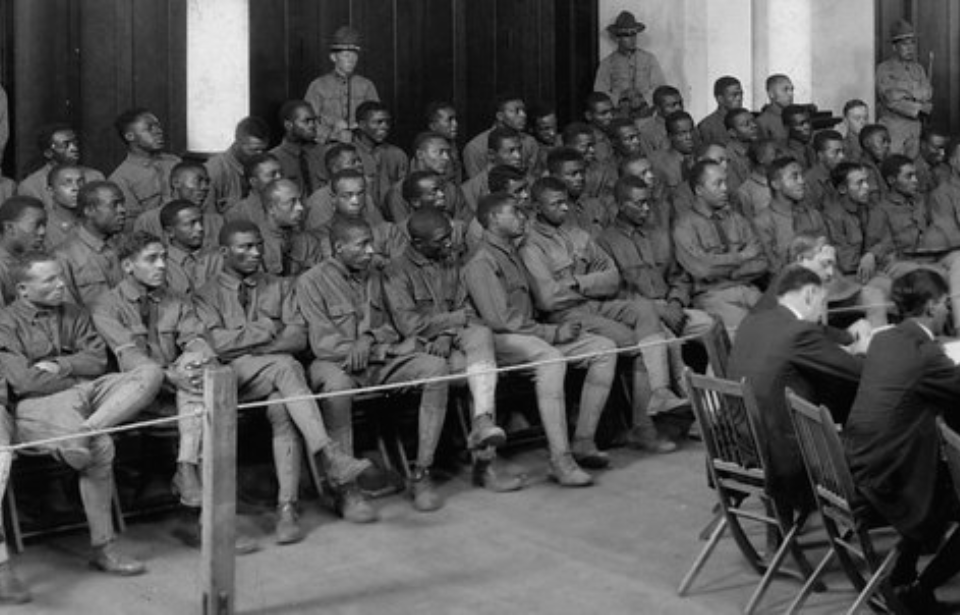Update – 23/02/2024:
Just a few months after their convictions were revoked and over a century since they were charged for their involvement in the 1917 Houston Riots, the men of the Buffalo Soldiers have finally received military burial honors. They’re also the recipients of brand-new gravestones that now reflect their newly-rewarded honorable discharges.
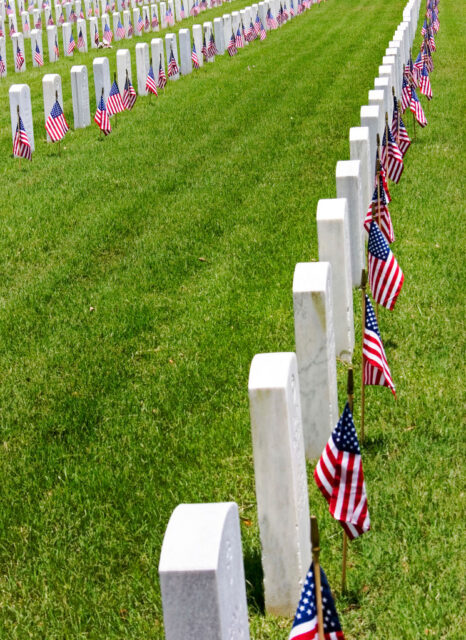
Family members, officials with the Department of Veterans Affairs and US Army personnel came together at Fort Sam Houston National Cemetery on February 22, 2024, for the ceremony to replace the old headstones, pay tribute to the soldiers’ service and restore their “dignity, honor and respect.”
The new headstones are inscribed with the men’s names, birth and death dates, their places of birth, their home states and their ranks, and the ceremony featured a presentation of colors, a three-round volley and the playing of Taps. Those who received the new gravestones are:
- Cpl. Jesse Moore
- Pfc. Thomas Hawkins
- Cpl. Charles Baltimore
- Pfc. William Boone
- Pvt. Albert Bright
- Pfc. William Breckenridge
- Pvt. Frank Johnson
- Pfc. Carlos Snodgrass
- Pvt. Risley Young
- Pvt. James Robinson
- Pvt. Pat McWhorter
- Pvt. James Divins
- Sgt. William Nesbit
- Pvt. Ira Davis
- Pvt. Thomas MacDonald
- Cpl. James Wheatley
- Pvt. Babe Collier
“These headstones are more than just physical markers,” said VA Deputy Secretary Tanya Bradsher. “They are a symbol of promise and progress. These headstones uphold the promise enshrined in the Constitution that in the eyes of the law, all Americans have equal rights and equal worth.”
VA Undersecretary for Memorial Affairs Matthew Quinn added, “These soldiers, known as the Buffalo Soldiers, served our nation at a time when, due to racial prejudices, their service was neither appreciated, nor respected. Today, VA will forever honor their service.
“To be able to recognize them honorably and for future visitors of the cemetery to know that these soldiers did serve honorably, they did serve this nation. It’s very, very important that we as the VA, we as the Army, we as a nation recognize the service of the soldiers,” he concluded.
Along with the ceremony, the descendants of the Buffalo Soldiers who were wrongly executed were presented with updated certificates, which no longer feature their convictions.
Original Article:
In August 1917, over 100 African-American men with the 3rd Battalion, 24th Infantry Regiment – known as the “Buffalo Soldiers” – marched on Houston, Texas after suffering months of abuse. In the aftermath of the riots, 110 were court-martialed, with many of them sentenced to death in what later became known as the largest mass execution of American troops by the US Army.
As of November 2023, Secretary of the Army Christine Wormuth has approved the recommendation from the Army Board for Correction of Military Records to officially revoke the convictions of those who’d been found guilty, allowing their families “to characterize their service as honorable.”
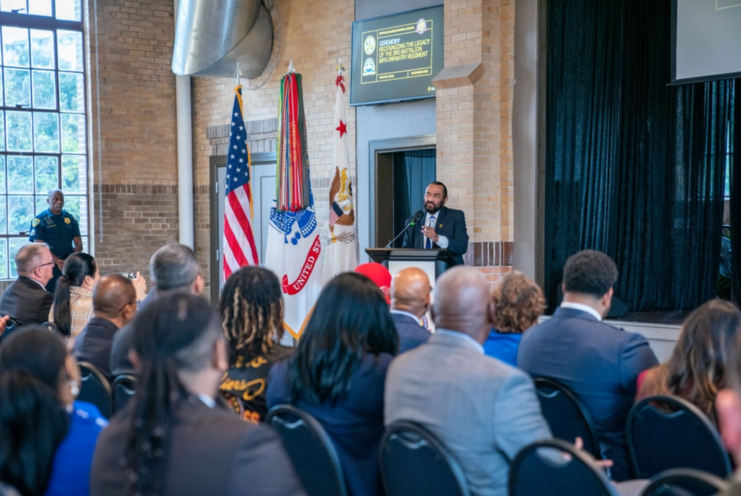
The announcement was made at a ceremony held at the Buffalo Soldiers National Museum in Houston on November 13, 2023. In a press release, Wormuth is quoted as saying, “After a thorough review, the Board has found that these Soldiers were wrongly treated because of their race and were not given fair trials. By setting aside their convictions and granting honorable discharges, the Army is acknowledging past mistakes and setting the record straight.”
The news follows petitions by the South Texas College of Law and retired general officers, who requested a review of the soldiers’ court-martial and clemency for the 110 men. This prompted Wormuth to ask the Army Board for Correction of Military Records to review the records and “provide recommendations about the appropriateness of each individual conviction.”
This process ultimately led the board members to decree that “significant deficiencies permeated the cases,” adding that the men were unfairly treated throughout the court-martial process.
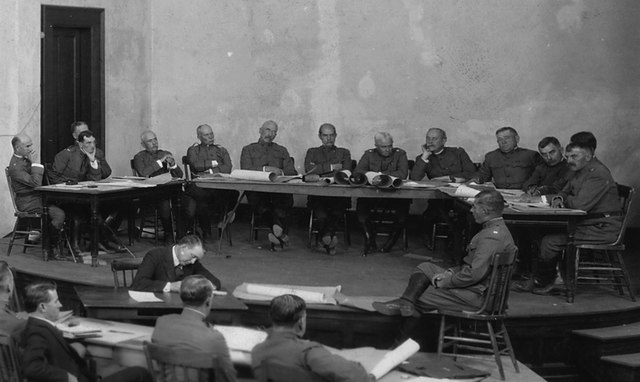
Following the US entry into the First World War, the 3rd Battalion, 24th Infantry Regiment was deployed to Houston from New Mexico, to supervise the construction of what would become Camp Logan. As Brig. Gen. Ronald Sullivan explained at the official ceremony, they arrived in the city at a time when it was “governed by racist Jim Crow laws.”
He added that “the soldiers came to town with patriotism in their heart, ready to serve their country faithfully but were met with racist provocations and physical violence.”
After months of racially motivated actions against them by both local police officers and White residents, as well as the arrest and assault of two soldiers and continued threatening rumors, 156 Buffalo Soldiers grabbed weapons, marched on the city and clashed with locals, all in the name of their own defense. Several individuals died in the fighting, including troops.
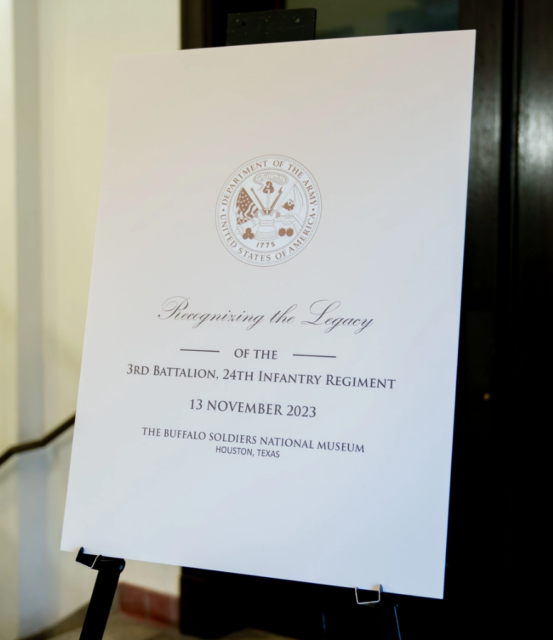
Following what became known as the 1917 Houston Riots, 110 of the soldiers were court-martialed. After 29 days in session, the court took just two days to deliver the first 58 convictions, of which 13 were death sentences. The following day, they walked to the gallows and were hanged. Within the next year, another 52 sentences were laid, with six more men slated to be executed.
In August 1918, US President Woodrow Wilson commuted some of the death sentences to life in prison. In a statement, which he made on the basis that his actions might be “a matter of record,” he said that there had been “no legal errors” in the court-martial process that would have “prejudiced the rights of the accused.” He went on to say that six of the death sentences were warranted because there was “plain evidence” that the soldiers “deliberately” engaged in “shocking brutality.”
As a result of the initial 13 executions, the Army changed its regulations to prohibit future ones from taking place without a prior review by both the Department of War and the president.
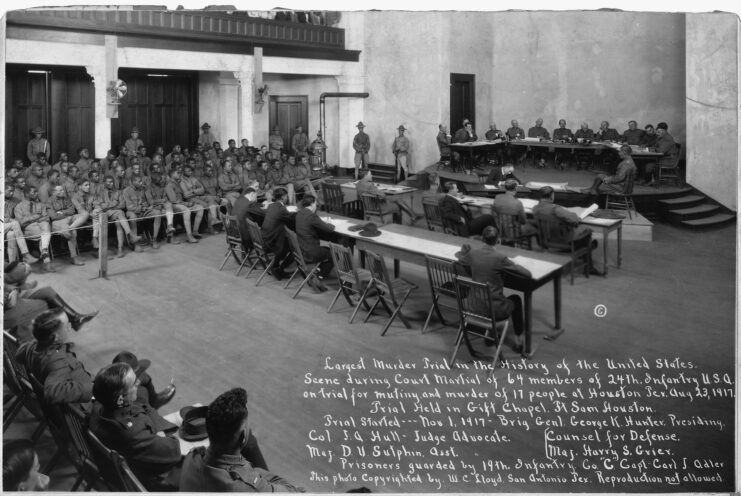
“With the support of our experts, our dedicated Board members looked at each record carefully and came up with our best advice to Army leaders to correct a miscarriage of justice,” Deputy Assistant Secretary of the Army for Review Boards Michael Mahoney said in the press release. “We’re proud of the hard work we did to make things right in this case.”
Of the Buffalo Soldiers who were executed, 17 were interred at Fort Sam Houston National Cemetery. According to Under Secretary for Memorial Affairs Matthew Quinn, they’ll be provided with new headstones that feature the “same amount of information that every veteran is entitled to.”
Under Secretary of the Army Gabe Camarillo added in the press release, “As a Texas native, I was grateful to participate in this process early in my tenure at Fort Sam Houston National Cemetery in San Antonio, and I am proud that the Army has now formally restored honor to Soldiers of the 3-24 and their families. We cannot change the past; however, this decision provides the Army and the American people an opportunity to learn from this difficult moment in our history.”
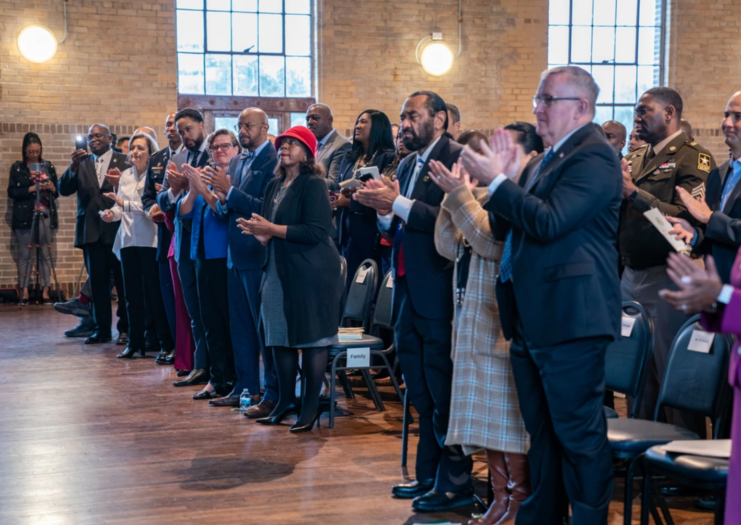
The Buffalo Soldiers was the nickname afforded to the all-Black 24th and 25th Infantry Regiments, who often fought alongside cavalry units. The moniker was originally given to the troops of the 9th and 10th Cavalry Regiments by those who fought in the American Indian Wars, who respected them for their fearlessness and courage.
More from us: Video Shows Northrop Grumman B-21 Raider Taking First Flight
The Army is currently setting up a way to deliver survivor benefits via the Department of Veterans Affairs.
